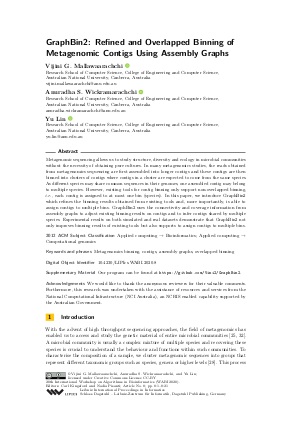LIPIcs.WABI.2020.8.pdf
- Filesize: 0.87 MB
- 21 pages

 Creative Commons Attribution 3.0 Unported license
Creative Commons Attribution 3.0 Unported license




Feedback for Dagstuhl Publishing